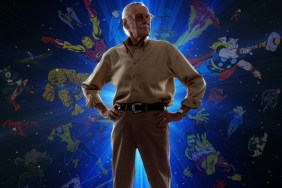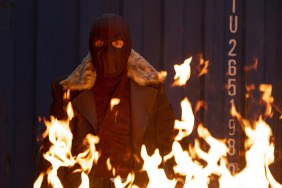cation
Benjamin Bratt as Lt. Colonel Mucci
James Franco as Captain Prince
Joseph Fiennes as Major Daniel Gibson
Marton Csokas as Captain Redding
Connie Nielsen as Margaret Utinsky
Mark Consuelos as Cpl. Guttierez
And literally about 100 more actors/roles
Summary:
A few decent performances and some last-minute action barely save a rather slow, dry and forced drama. Ultimately, The “Great” Raid is just okay.
Story:
In 1945, U.S. troops led by Lt. Colonel Mucci (Benjamin Bratt) and Captain Prince (James Franco) were sent to free over 500 POW’s held captive at Camp Cabanatuan in the Philippines. Two imprisoned officers, Major Gibson (Joseph Fiennes) and Captain Redding (Marton Csokas), plan their own escape after being subjected to indignities by their captors, while back in Manila, Gibson’s lover Margaret (Connie Nielsen) has joined the local resistance against the Japanese invaders.
Analysis:
With America at war for over two years, Hollywood’s desire to make war films seems to have dried up, which may be why The Great Raid, based on books by William Breuer and Hampton Sides, has languished on the shelf for many years. The premise is interesting in that it deals with a part of the war that hasn’t really been explored very much in recent years, and in many ways, it acts as a flashback to old-time war movies, specifically John Wayne’s “Back to Bataan” which was made in the same year that the events from this movie took place.
Essentially, the film is made up of three distinct stories told simultaneously: that of the prisoners-of-war (POWs) and what they endured, the story of those dedicated to rescuing them, and the story of a female freedom fighter in Manila trying to smuggle much-needed medicine to her imprisoned lover.
There have been many movies about POWs in captivity, but it’s still the most interesting aspect of The Great Raid. Over 500 men were imprisoned at Camp Cabanatuan for three years, never realizing that they are the last survivors of the Bataan Death March, which weeded tens of thousands of captured American soldiers down to just them. Their Japanese captors have already killed off many of the soldiers imprisoned at other camps rather than allow the enemy to get their men back, something that puts even more pressure on the soldiers sent to rescue them. The film’s strongest scenes happen here, such as when a soldier escapes and their captors decide to shoot ten innocent men to teach the prisoners a lesson. The camp setting offers the film’s two best performances from Joseph Fiennes and Marton Csokas, as the captured commanding officers who must keep an eye on each other if they want to survive the ordeal. Both of them are able to carry themselves much like leading men of that era, adding to the feel of watching a movie made in the ’40s or ’50s.
For whatever reason, it was decided that there needed to be some sort of romance in the film, the only logical explanation why so much of the film is dedicated to Connie Nielsen’s nurse back in Manila. It seems like an unnecessary and forced subplot in the overall story, but so much focus and screen time is given to Nielsen as she struggles to get medicine for the POWs without being captured or killed herself. While it’s respectable to try to include women in what tends to be a boys-only genre, we’re never told what the relationship is between Nielsen’s Margaret and Joseph Fiennes’ captured officer or how she even knows that he’s still alive. The resolution to their story is extremely unsatisfying as well.
Then there’s the story of the men planning a rescue mission which bears an uncanny resemblance to Saving Private Ryan. While this chapter offers the most thrills and excitement, it’s hindered by poor casting in the form of Benjamin Bratt, who is never believable as the leader of the raid. He just doesn’t have the necessary on-screen charisma to pull off such a role. Jams Franco is far more convincing as the company’s strategist and Mucci’s right hand man, although when his character tries to explain his complex strategy for the rescue to his men, well, I hope they got it, because I was lost within seconds. Fortunately, that silly scene leads to some of the film’s only real action scenes as the rescue mission goes into effect, but it’s a little too late by then, because we’ve already had to suffer over an hour and a half of dreary set-up.
Director John Dahl, whose previous work includes diverse fare like Rounders and the thriller Joy Ride, seems like an odd choice to direct this movie. Presumably he was a fan of those old war movies, because he uses a similar formula to introduce and flesh out the different characters and their relationships, rather than resorting to the flashy effects and camerawork seen in far too many recent war films. Then again, with more talk than action, the movie seems bland by today’s standards, and the script by first-timers Carlo Bernard and Doug Miro isn’t that great.
On top of that, there are just way too many characters to keep track of, and not nearly enough good actors to fill those roles. Many of the roles are handled by glorified extras, few of them able to pull off any sort of convincing performances even in smaller roles. Because of this, you’re always aware that you’re watching a movie rather than seeing a part of history.
At least the actual rescue attempt is done well enough to not completely sour the experience, but when the end credits roll over actual footage of the real POW’s and the soldiers who saved them, it’s the only part of this movie that seems remotely real.
The Bottom Line:
The story behind The Great Raid is fairly interesting, showing a part of WWII that hasn’t been seen much in recent movies. The movie is all over the place though with too many characters, and only fans of old-time war dramas will appreciate what Dahl has done. Others will probably be bored.










